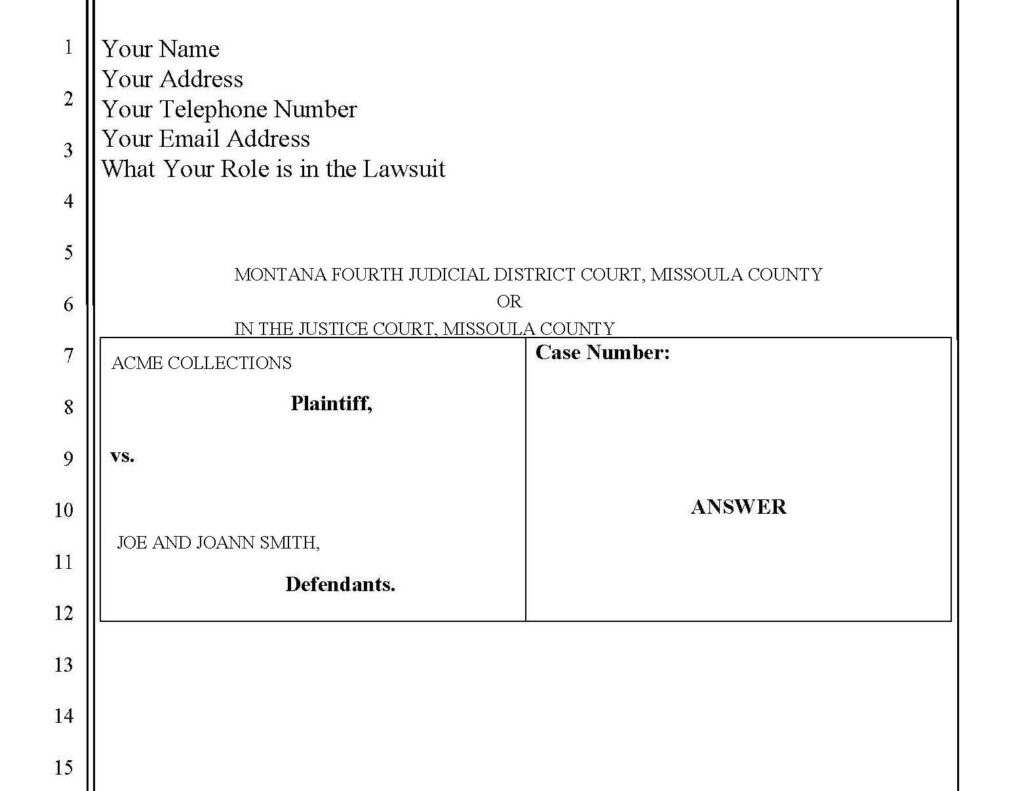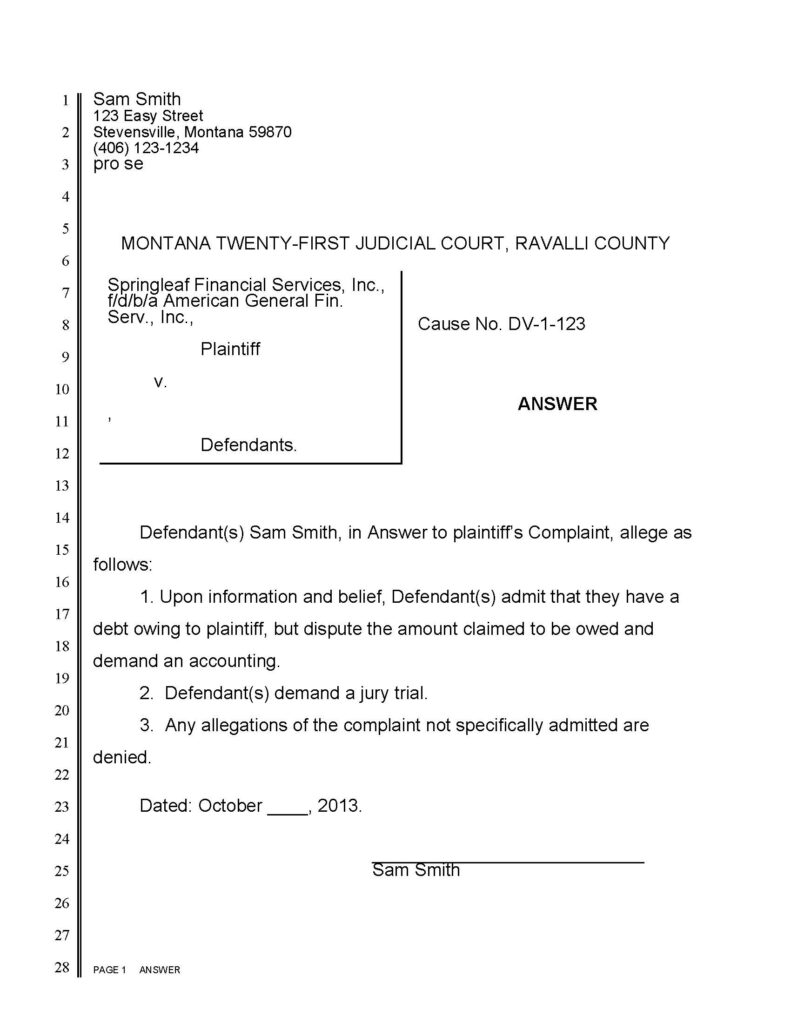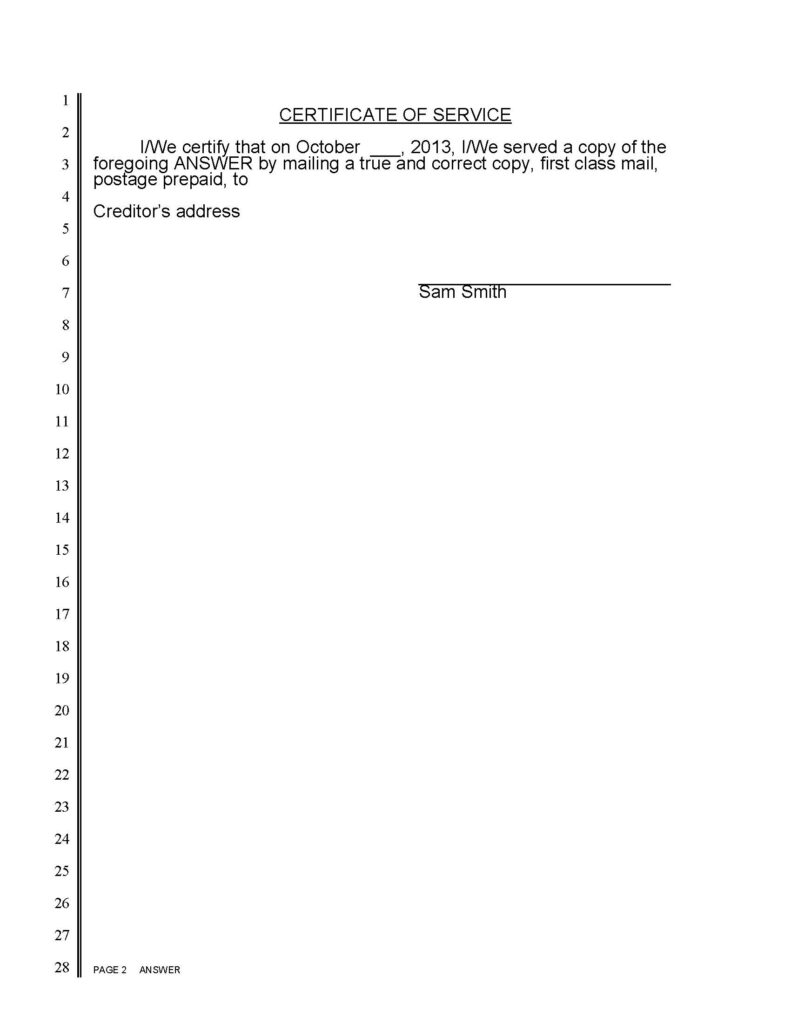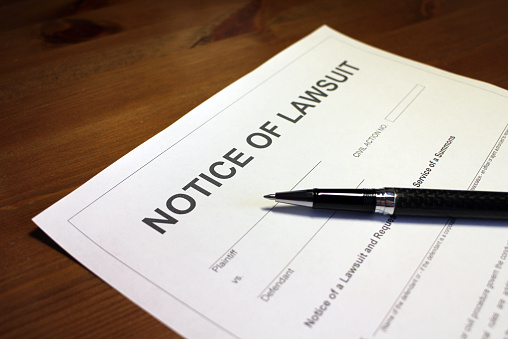Okay, So You Have Been Served With A Summons And Complaint, Now What?
Take a deep breath. You have some options: You can ignore it and in a few weeks the creditor will have obtained a default judgment against you and then they can start garnishing wages, levying against bank accounts, intercept state tax refunds, and more. So, doing nothing is not a realistic option. You must act. You need to put together a response to the complaint.
First, what are the various documents and what are they? Most likely you likely have been served with two documents, the Summons and Complaint.
Summons: The Summons is the document that was served on you by the process server. This document tells you how many days you have to submit your response (Answer) to the court. Once you get the Summons make sure you make note of the deadline from the day you were served. You need to respond in some form or fashion before this deadline.
Complaint: The Complaint is the “lawsuit”. The Complaint is a list of assertions/allegations that the plaintiff (the person/company suing you) claims they have against the defendant (you). Nothing has yet been proven.
Answer: The Answer is a formal document you draft in response to the Complaint. This is the document you are going to learn how to create in this article. This document is where you (the defendant) will be admitting or denying the allegations the plaintiff has asserted against you.
Pleading: A pleading is any formal court document, such as a Complaint, the Answer, motion for default judgment, etc.
Sometimes the justice courts in Montana have a triplicate Answer form which makes it very easy. You can call the clerk of the justice court to ask if they have a form. If not, you need to draft the Answer yourself, but it is not hard. At the time of the writing of this article, the cost to file an Answer in justice court is $30 per defendant and in District Court, it is $70 per defendant.
This caption is an example from a local court here in Missoula (either for the District Court or the Justice Court), there will only be one court listed, unlike the example to the right. The captions for most courts look similar. You need to use the caption of the Complaint you were served as a template. The upper left-hand corner of the Answer is where you put your contact information. This is so the plaintiff and the court will know how to contact you and where to send future documents and pleadings. If you look at the Complaint this is the same area where you will find the contact information for the plaintiff or the plaintiff’s attorney. The legal term when a defendant represents themselves is “pro se” which means “for one’s own person.”
Below that, centered on the page is the name of the court where the lawsuit was filed. This is important because it lets you know where you need to file your Answer once you have completed it.
Next, in the box on the left is a listing of the parties to the lawsuit. The first party is the plaintiff (the creditor who is suing you). Below that is your name(s) as the defendant(s) in the lawsuit.
Two things are listed in the box on the right: the case number that has been assigned by the court, and the title of the document you are filing. You can get the case number from the Complaint or the Summons you received earlier. Copy it exactly as it appears on those documents. The title for the document you are working on now is the Answer.
The space below these two boxes is where you will draft your response to the allegations of the Complaint. It is important to note that you don’t need any fancy software and the caption can even be handwritten in most places. Just so long as it has the needed information the Court should accept it.
Now that the caption has been drafted you next proceed to your response to the allegations of the lawsuit. Your Answer. This is where agree or disagree with the allegations in the Complaint. Don’t make this harder than it needs to be. The Answer is not where you prove your innocence or explain why you were in debt in the first place. The Answer is where you simply respond to the allegations in the Complaint. There are generally only three types of answers – you admit the allegation, you deny the allegation, or you simply don’t know.
When you draft this section you need to have the Complaint out so you can reference exactly what is being alleged against you. In most cases, the plaintiff will have broken down the allegations into numbered paragraphs. You need to respond (or Answer) each of those paragraphs. Again, there are only three answers, admit, deny, or you don’t know. Here is an example of each type of answer (with a little “legalese” mixed in).
You should admit those things that are accurate and deny those things that don’t appear to be accurate. You have to be careful that your answer does not admit the allegations of the complaint, otherwise, the court will enter judgment for the plaintiff. You need to point out problems or inaccuracies in the complaint. In most cases, you might admit that you owe the plaintiff some money, but you honestly dispute the amount that they claim is owed. Also, by demanding a jury trial, you will not only potentially get to try your case in front of a jury, but you will also add more time to the process before the plaintiff can get a judgment. You can repeat this for each numbered paragraph throughout the Complaint, or you can simply put in a blanket denial as in the example to the right. If you wish to do more than simply buy some time to explore all your options, and you truly have a defense against the lawsuit, you can add affirmative defenses. That is not part of this article.
The next step is to be sure to draft and add a “Certificate of Service” to your Answer. See the example of a certificate of service. You need to add the name and address of the plaintiff or the attorney of the plaintiff and serve a copy of your Answer upon them.
Now that you have drafted the Answer it is time to get it filed with the court. Print out the original, sign it, and then make two copies. Go down to the courthouse with your original Answer and two copies, file the document with the clerk (be prepared to pay a filing fee – call ahead to find out what your court charges). Ask the clerk to stamp the other two copies you brought with you. Keep one copy for your records and mail a copy of your Answer to the plaintiff or the attorney for the plaintiff.
Now that the Answer is drafted you need to research what the next procedures are in your state. Filing the Answer will help you avoid having a default judgment entered against you in the short term, but it does not mean you have won your case. You will need to do additional research and possibly contact an attorney to get advice as to how to proceed going forward.
Also, you do need to understand that while you always have the right to represent yourself in court and sometimes need to out of necessity, there are times when it is simply not a good idea. This information is provided as an informative communication and is not legal advice, as I obviously do not know the specific details of your situation. I always recommend consulting with an attorney to discuss your options and get an idea of the complexity of the case you are defending. Good luck!
In some cases, depending on your circumstances, you might consider filing bankruptcy to make the lawsuit and the judgment go away. I also continue to meet with people who are suffering through a wage garnishment because they failed to file an Answer and ended up having a default judgment entered against them.
No attorney/client relationship occurs unless and until you sign an agreement confirming the nature and scope of representation. This website is for informational purposes only and does not contain legal advice. Please do not act or refrain from acting based on anything you read on this site.
If you have more questions, contact me. 406.541.3565.







